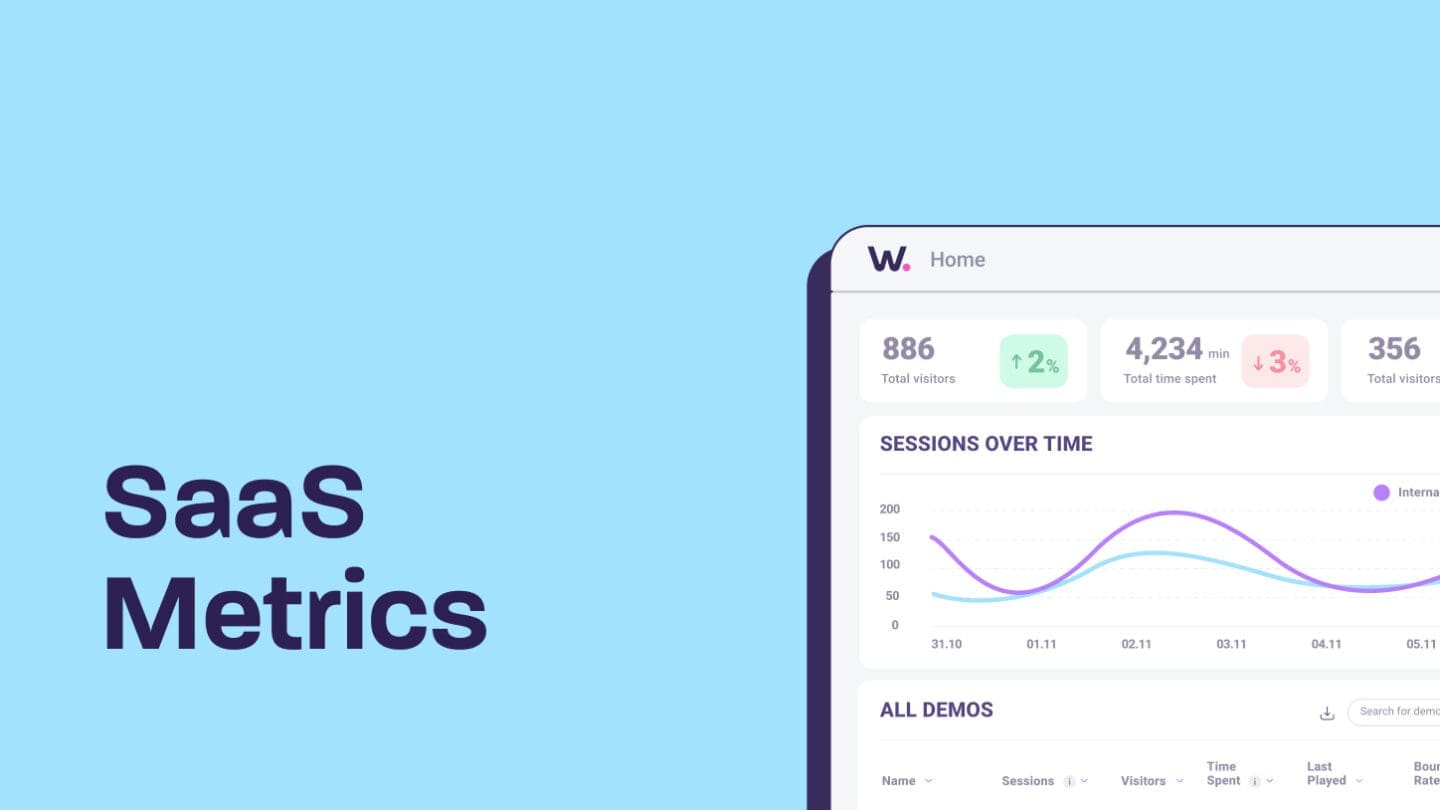No one likes to think about customer churn. Churn can feel like a failure. After all, clients have tried your product and then decided to stop paying for it. Unfortunately, churn (also known as customer attrition) is part of doing business.
If you want to succeed with your b2b sales strategy, you have to understand how fast you are losing customers and why. Once you know common SaaS churn reasons and how they affect your business, you can start reducing customer churn.
- What is customer churn?
- What is SaaS churn?
- How to calculate SaaS B2B churn
- The SaaS churn rate formula
- What is a good SaaS churn rate?
- Conducting a customer churn analysis
- 8 common reasons why customers churn
- Miscommunication
- Cash flow crisis
- Loss of key users
- Bad support
- Changed needs
- Product problems
- Not enough success
- Bad onboarding
- Reduce churn rate with Walnut
What is customer churn?
Customer churn rate is the percentage of customers that have stopped using your product or service during a specific time frame (e.g., monthly or annually).
What is SaaS churn?
Your B2B SaaS Churn (or customer attrition) is a key metric or key performance indicator used to track the number of customers that have left your company or stopped using your product, or the amount of revenue your company has lost due to cancellations within a specific time frame.
Executive leaders track this KPI to evaluate company performance and forecast revenue. Your SaaS growth rate needs to stay above your churn rate to maintain positive growth.
How to calculate SaaS B2B churn
Your customer churn rate looks at the percentage of your customers who cancel or fail to renew during a given period. Your CRM or analytics tools may have built-in subscriber counts that you can use.
The SaaS churn rate formula
The standard churn rate formula is (Lost Customers / Total Customers at the Start of Period) x 100.
If your business had 200 customers at the beginning of the month and lost 20 customers by the end of the month, you would divide 20 by 200. The answer is 0.1. When you multiply that answer by 100, you have your monthly churn rate of 10%.
What is a good SaaS churn rate?
Most SaaS companies aim for a churn rate of about 3%. You won’t need customers to stick around long enough to recoup your customer acquisition cost (CAC). Your customer acquisition is the cost of signing a client. This mainly includes your marketing expenses and sales commission.
Remember that high churn will compound. At a 5% gross churn rate, you will lose half of your subscription revenue every year.
Let’s say you earn $100,000 and experience 5% churn every month. By month 2, you’ll earn $95,000. By month 3, with 5% churn, you’ll earn $90,250.
It would continue decreasing from there:
Month 3: $90,250 – 5% = $85, 737.50
Month 4: $87,737.50 – 5% = $81, 450.63
Month 5: $81,450.63 -5% = $77,378.09
Month 6: $77,378.09 – 5% = $73,509
Month 7: $73,509 – 5% = $69,833
Month 8: $69,833 – 5% = $66, 342
Month 9: $66,342 – 5% = $63,024
Month 10: $63,024 – 5% = $59,873
Month 11: $59,873 – 5% = $56,880
The churn will keep compounding, and by the end of the year, your subscription revenue will be down to $54,036 unless you can turn things around.
Conducting a customer churn analysis
Churn rates indicate whether your clients are getting good value from your product or service. If your SaaS churn rate is too high, there is something amiss with your relationship. Conducting a churn analysis can help you determine:
- Which customers are churning?
- Why are they churning?
- Which customers of a similar profile are most likely to churn soon?
There are several methods you can use to calculate churn. Some SaaS companies automatically send feedback forms to companies that cancel to determine their reasons for canceling. Others conduct telephonic interviews with churned clients.
Once you’ve gathered the reasons, look for commonalities among the canceled clients. Are SMBs more likely to churn because of cost? Do companies in the automotive industry cancel because they feel they aren’t using it enough?
If you can establish patterns and common reasons for cancellations, you can implement improvements that prevent churn.
8 common reasons why customers churn
There are several reasons why customers might cancel their accounts, and not all are within your control. Common reasons for churn include:
Miscommunication
Sometimes there’s a gap between what customers believed your product could do and what it does. In the end, your product is simply not the right tool for the job. A good quality, personalized demo can go a long way towards setting realistic goals at the beginning of the relationship.
Cash flow crisis
Occasionally customers may churn because they simply do not have the cash flow to pay for your service. It’s essential to follow up with customers who churn to see if you can meet them halfway and retain their accounts. It’s better to have customers downgrade than cancel altogether.
Loss of key users
In every organization, some users advocate for your software solution and use it daily. They are the key users that promote your product to their colleagues and superiors and understand the benefits. If these critical users leave your client’s company, their replacements might advocate replacing your solution with a different one.
Bad support
Customers don’t want to battle for hours to solve problems. Offer fast, effective support to avoid customer attrition.
Changed needs
Your clients’ needs may change over time. They may require a feature that you don’t currently have. Keep speaking to clients to find out what they require and if there is a common need, develop your product accordingly.
Your customer churn analysis should reveal which customers are likely to churn according to size, industry, or other factors. If some sectors or clients aren’t a good fit for your business, it’s a good idea to stop targeting similar clients in your sales efforts.
Product problems
Are you delivering on your promises? If the product isn’t working as it should, your customers may decide to cancel. Make sure that you are regularly debugging and solving common product problems.
Not enough success
Your customers will have lofty goals, and to achieve them, they need to make continual progress. If their initial successes start to dry up, they will be quick to abandon ship.
Customer surveys to gauge customer satisfaction and customer delight are always a good idea, but that shouldn’t be your only form of engagement. Send your customers regular tips and advice for getting the most out of your product. Create feature demos and product tours and send them in your emails to clients to keep them informed and activated long after they’ve signed.
Bad onboarding
The majority of customer churn occurs between signing up for a product and achieving success with a product. Customers pay for SaaS products because they want to solve a pain point or achieve a specific goal. If customers don’t see the desired result fast enough, they’ll look elsewhere for a solution.
A good onboarding process can help you reduce customer churn. Make sure that you create detailed product tours that show customers how to use your software. Clients can reuse these tours every time they bring new hires onboard.
Reduce churn rate with Walnut
Walnut can help you create personalized demos, product tours, and tutorials for every stage of the sales, customer onboarding, and marketing journey with your clients. They are failure-proof, personalized, and interactive so that your customers stay engaged for longer. Talk to us and hear how you can start reducing churn in your SaaS business today.



